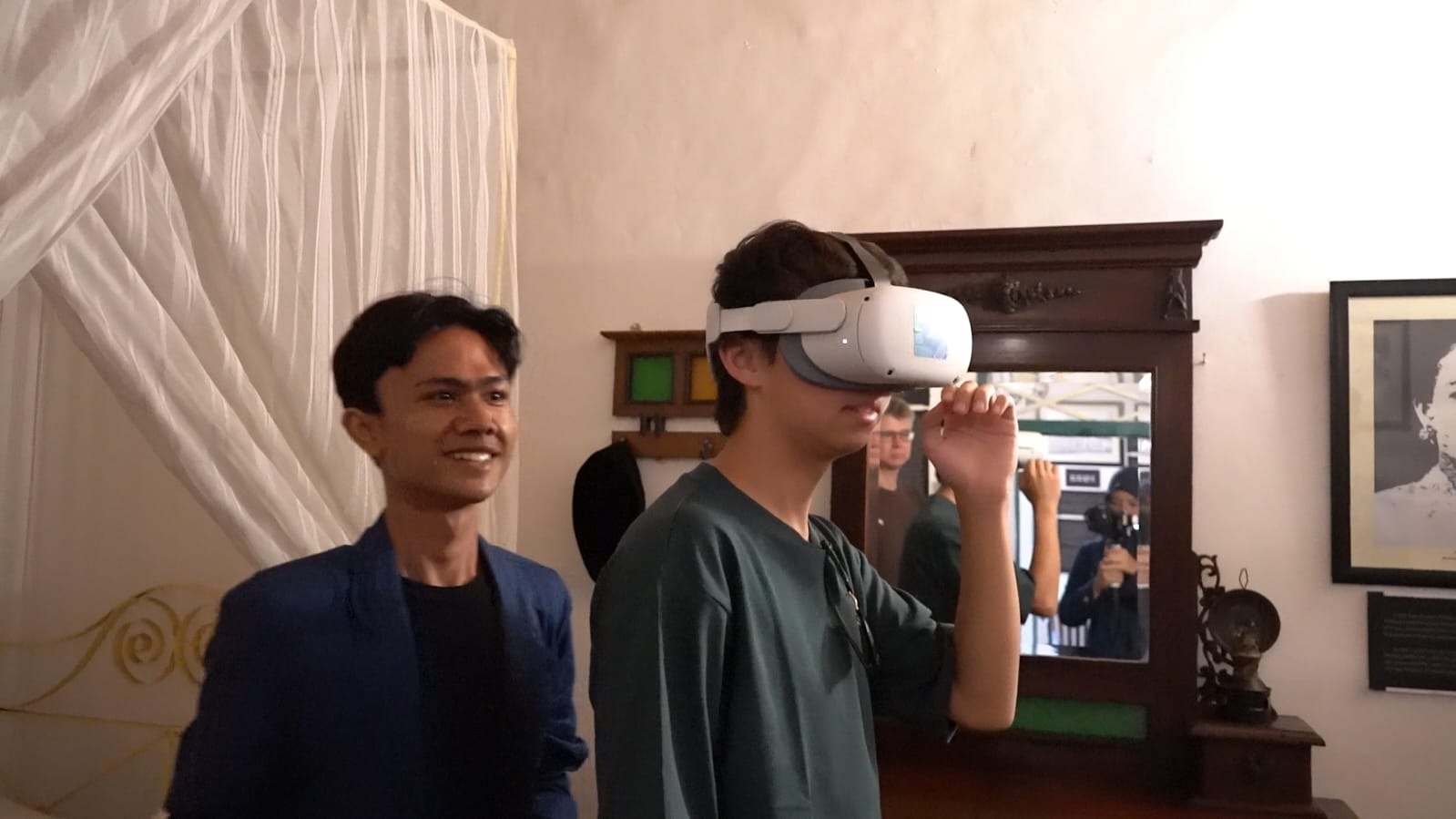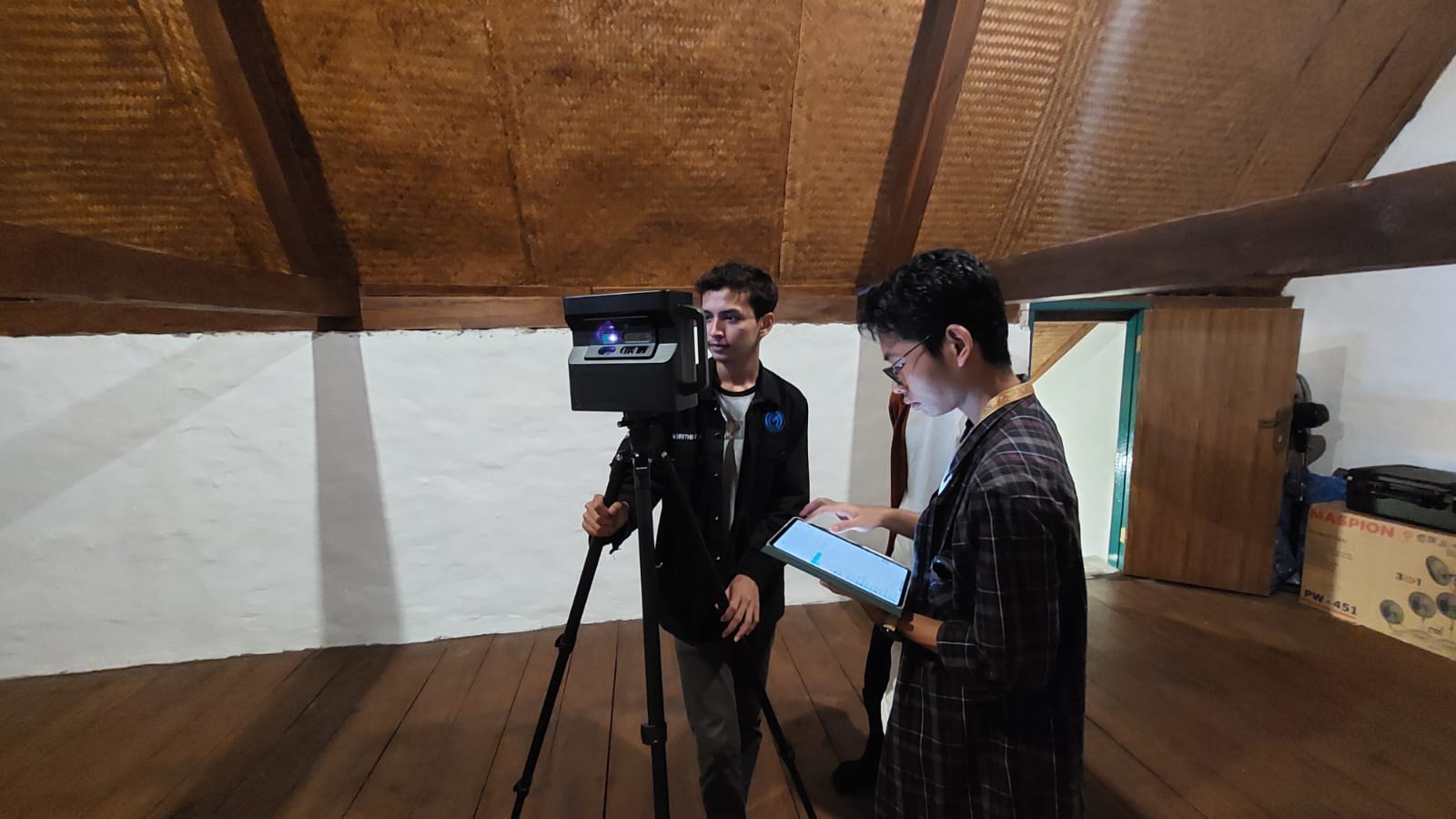ITS Researchers Preserve Historic Buildings Using VR Technology

VR Development Process for the Digitalization of Historic Building Conservation at the Interior Design Department’s Science and Technology Laboratory at ITS
ITS Campus, ITS News – A team of researchers from the Interior Design Department at the Institut Teknologi Sepuluh Nopember (ITS) is employing Virtual Reality (VR) technology to digitize the conservation of historic buildings. In collaboration with the Architecture Program at Ciputra University and the Surabaya City Tourism Department, this research project is envisioned as a means of preserving cultural heritage for future generations.
ITS Department of Interior Design lecturer, Okta Putra Setio Ardianto ST MT, explained that VR technology was chosen due to its immersive nature, allowing for a high level of realism up to 360 degrees. According to Okta, this will enable a more authentic experience of digitally preserved historic buildings in the future and could also serve as a promotional tool for the historical and cultural tourism of Surabaya.

Testing with participants at the HOS Tjokroaminoto Museum in Surabaya
Regarding the process, Okta elaborated that this research is intended to assess the success of VR development using three-dimensional (3D) scanning and to determine the spatial identification level for users within the VR environment. The detailed process includes site surveys, LiDAR room scans, photogrammetry material and content scans, 3D geometry refinement, VR development, and laboratory testing.
Okta mentioned that direct testing with participants was also conducted during this research. Interested individuals from the public could visit the HOS Tjokroaminoto Museum during testing sessions. The first testing session took place on August 16th, with the second and third sessions scheduled for September 7th and late September, respectively. “The findings will also be presented at an international seminar,” added Okta.

3D room scanning with Light Imaging Detection and Ranging (LiDAR)
Furthermore, Okta revealed that the successful case studies for the development of digital twins included the dormitory room of Bung Karno and the private room of HOS Tjokroaminoto in the Peneleh area of Surabaya. According to Okta, preliminary analysis indicated that participants found the digital twins to be very realistic, including aspects like lighting nuances and spatial scale. “Only minor improvements are needed in visual material details,” he stated.
He acknowledged that, so far, the number of scannable historic buildings is limited, primarily encompassing medium-scale structures under the management of the Surabaya City Tourism Department. In conclusion, Okta hopes that the results of this research can be employed as a more extensive method for digitally conserving historical building spaces, not only in Surabaya but also across all cultural heritage sites in Indonesia.

Comparison of the digital twin VR application’s display (bottom) with the original room photo (top)
This research, spanning five months, involved a team of researchers comprising faculty members and five students. Besides Okta, other ITS Department of Interior Design lecturers who contributed include Dr. Mahendra Wardhana ST MT, Thomas Ari Kristianto SSn MT, Caesario Ari Budianto ST MT, and Anggra Ayu Rucitra ST MMT. Participating faculty members from Ciputra University include Dyah Kusumawardhani ST MArs, Yusuf Ariyanto ST MArs, and Melania Rahadiyanti ST MT. (ITS Public Relations)
Reporter: Shafa Annisa Ramadhani
Related News
-
ITS Wins 2024 Project Implementation Award for Commitment to Gender Implementation
ITS Campus, ITS News —Not only technology-oriented, Institut Teknologi Sepuluh Nopember (ITS) also show its commitment to support gender
September 08, 2023 11:09 -
ITS Professor Researched the Role of Human Integration in Sustainable Architecture
ITS Campus, ITS News –The developing era has an impact on many aspects of life, including in the field
September 08, 2023 11:09 -
ITS Sends Off Group for Joint Homecoming to 64 Destination Areas
ITS Campus, ITS News — Approaching Eid al-Fitr, the Sepuluh Nopember Institute of Technology (ITS) is once again facilitating academics who want
September 08, 2023 11:09 -
ITS Expert: IHSG Decline Has Significant Impact on Indonesian Economy
ITS Campus, ITS News — The decline in the Composite Stock Price Index (IHSG) by five percent on March 18,
September 08, 2023 11:09
